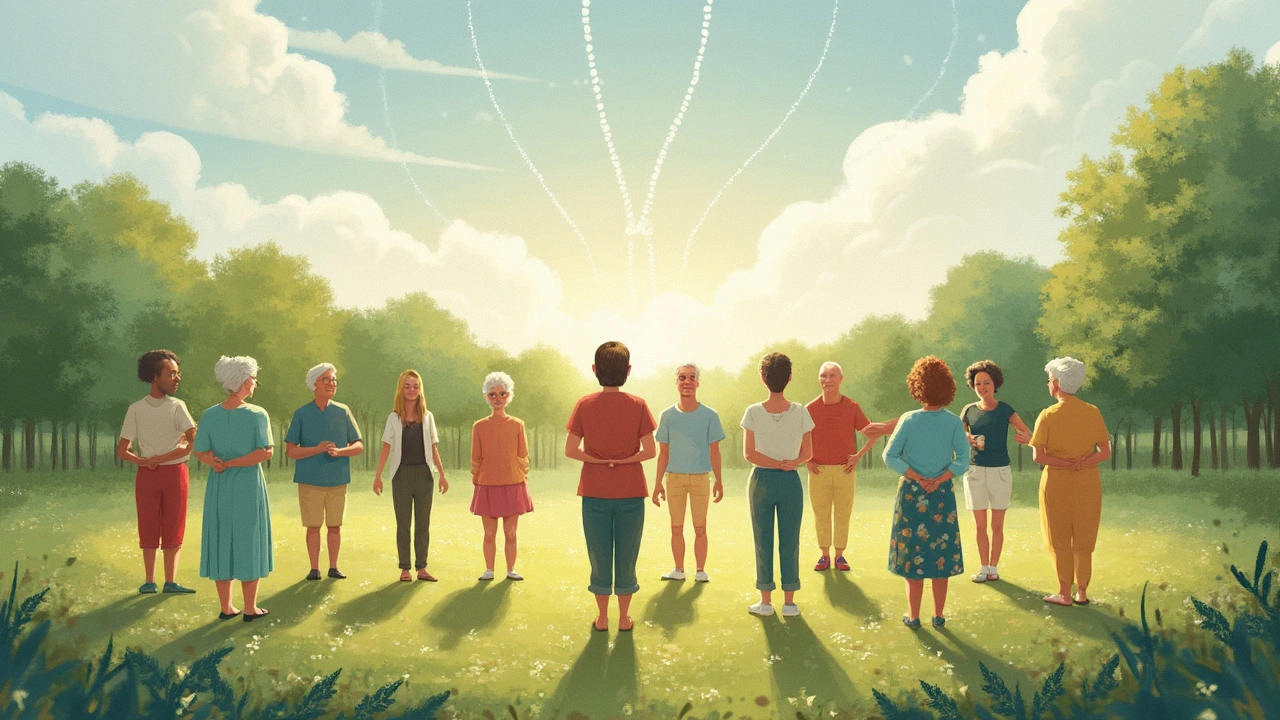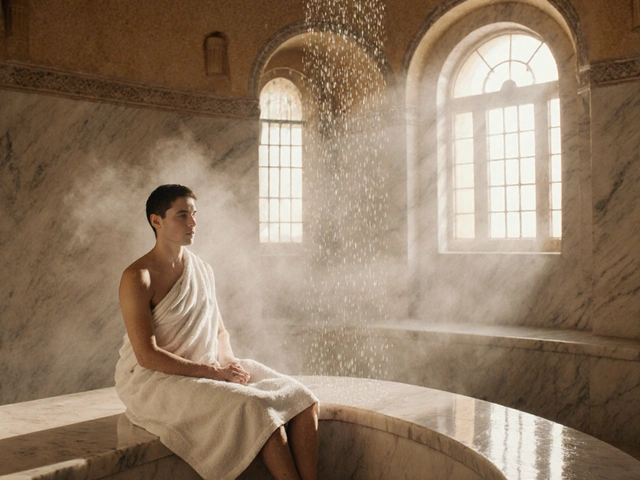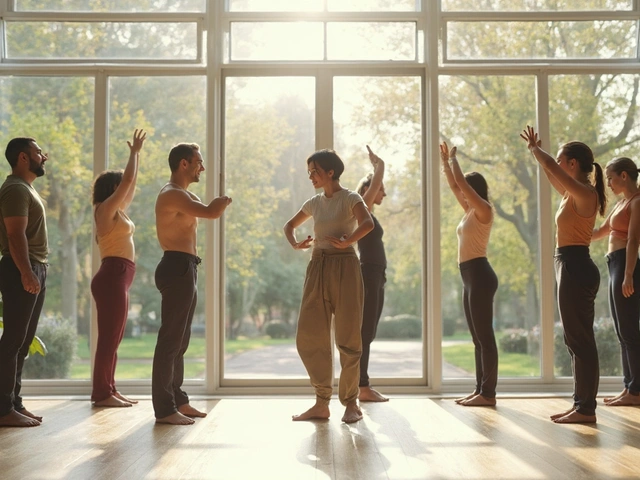Ortho-Bionomy: A New Hope for Chronic Pain Sufferers

Chronic pain can turn everyday things—sleeping, working, even playing with your kids—into a headache. If you've bounced between doctors, pills, and tough physical therapy, the idea of something gentler might sound too good to be true. But that's exactly what Ortho-Bionomy promises: pain relief without brute force.
This method uses subtle movements and comfortable positions to trigger the body's self-correcting instincts. Instead of wrestling your muscles into submission, a practitioner actually works with your body’s natural responses. Think of it less like a boot camp, more like showing your body a shortcut back to comfort.
People say it’s a game-changer for those worn out by chronic pain. You won’t find any loud cracks, hard stretches, or lectures on posture here. Regular folks and athletes alike have tried it when nothing else worked, sometimes with surprising results. Ready to see if this gentle approach can make a difference for you? Let’s break down how it really works.
- What Is Ortho-Bionomy?
- How It Differs From Other Therapies
- What a Session Feels Like
- Real-World Benefits and Research
- Tips for Getting Started
What Is Ortho-Bionomy?
If you haven’t heard of Ortho-Bionomy, don’t worry—you’re not alone. This hands-on therapy was started back in the 1970s by Arthur Pauls, a British osteopath and judo black belt. He figured out that the body won’t always respond well to force, but if you guide it in the same direction it’s already going, things start to change. That’s what sets Ortho-Bionomy apart. It uses gentle movements and comfy positions to let your body fix itself, often just by showing it the path of least resistance.
The biggest thing to know: there’s no cracking or deep muscle digging involved. Instead, practitioners support limbs, apply light compression, and pay close attention to how your body responds. The aim is for your nervous system to get the message and make its own corrections. This whole idea is rooted in something called “proprioceptive re-education”—basically, waking up your body’s ability to notice and correct what’s off.
Here’s what physically happens during a session:
- Practitioners use gentle holding, light rocking, or slight movements.
- You stay clothed, relaxed, and comfortable—no weird positions or stretching until you wince.
- They talk with you about what feels better or worse in the moment.
- Your body gets time to integrate the correction, without anyone rushing you.
The ortho-bionomy approach is so relaxed that people of all ages can try it. Seniors with arthritis, athletes with nagging injuries, and even folks dealing with fibromyalgia have found it less stressful than most therapies.
| Fact | Details |
|---|---|
| Founded | 1970s by Arthur Pauls, D.O. |
| Typical Session Time | 30–60 minutes |
| Client Age Range | Teenagers to seniors |
| Main Focus | Gentle movement, body-led adjustments |
If you’re looking for something that won’t leave you sore or dreading your next appointment, Ortho-Bionomy could be the quiet reset you need. Don’t expect magic overnight, but a lot of people claim relief where nothing else helped.
How It Differs From Other Therapies
Most pain relief methods—like deep tissue massage, chiropractic, or even physical therapy—have one thing in common: they can be downright forceful. Massage therapists often dig deep, stretching and kneading to break up knots. Chiropractors go for quick adjustments, sometimes with a crack. Physical therapists push through resistance to improve strength or movement. That’s not always fun when you’re already hurting.
Ortho-Bionomy throws those tactics out the window. It focuses on comfort right from the start, never forcing the body into painful positions. Instead, the practitioner gently guides joints and muscles into positions where tension eases up. If a movement or position feels even slightly uncomfortable, it’s skipped. Your body basically sets the rules.
Here’s a side-by-side look at what sets Ortho-Bionomy apart:
| Therapy | Main Approach | Pain Level During Session |
|---|---|---|
| Ortho-Bionomy | Gentle positioning and body awareness | Tends to be pain-free |
| Deep Tissue Massage | Strong pressure on muscles | Can be sore or even painful |
| Chiropractic | Spinal adjustments/manipulations | Sometimes causes discomfort |
| Physical Therapy | Strength and movement exercises | Occasionally uncomfortable |
Another major difference is the focus on teaching your own body to correct itself. Ortho-Bionomy sessions usually include some simple moves you can try at home, encouraging you to stay tuned into what feels best. You probably won’t need fancy equipment or ice packs afterward. Recovery time? Often, it’s instant because there’s no post-session soreness.
- If you dread “no pain, no gain,” this is your crowd.
- The approach works well for folks who can’t handle aggressive treatments—think sensitive people, the elderly, or even kids.
- Sessions often feel relaxing, not stressful. Many clients say they leave more limber and calm, not beat up.
The main point: ortho-bionomy puts your personal comfort and body’s wisdom ahead of any one-size-fits-all routine. That alone makes it stand out in a pretty crowded field of pain relief options.

What a Session Feels Like
Walking into an Ortho-Bionomy session feels different right off the bat—no harsh lighting, no intimidating tables stacked with equipment. You usually start by talking through what hurts or feels stuck. The vibe is relaxed, like you’re being listened to and not judged for being stiff or in pain.
Sessions mostly happen fully clothed, lying on a padded table (or sometimes sitting in a chair if that's more comfortable). The practitioner moves your limbs or body into super comfy positions, sometimes holding a joint or a muscle for a bit, waiting for your body to "let go." There’s no pain or pushing through discomfort. The touch is light—think of it more like a gentle nudge than deep pressure.
You might feel warmth, a gentle release, or even tingling. Some people get so relaxed that they zone out or fall asleep—no kidding. There’s no one-size-fits-all approach, so the practitioner adjusts based on your feedback. You’re part of the process, not just lying there like a mannequin.
“The first thing people usually notice is how gentle and respectful the process is. It’s about supporting the body, not forcing anything to happen,” says Arthur Lincoln Pauls, creator of Ortho-Bionomy.
Many folks expect to feel sore after a bodywork session, but with Ortho-Bionomy, most just feel looser and lighter—sometimes immediately, sometimes over a few days as things shift. If something feels off during the session, you just speak up, and the practitioner quickly adjusts. No toughing it out required.
Curious about what actually happens during the hour? Here’s a quick peek at the usual steps:
- Check-in chat about pain, stiffness, daily life, and goals
- Body scan and gentle movement to find what's bothering you
- Positioning limbs and joints for comfort and a "reset"
- Short holds with subtle movements by the practitioner
- Feedback—how does this feel, what’s changing?
- Simple exercises or movements to do at home, if needed
Some clinics even use a quick survey before and after each session to track improvements. Check out this real-world data from a mid-sized practice in Texas over six months:
| Client Group | Reported Less Pain (%) | Improved Range of Motion (%) |
|---|---|---|
| Chronic back pain | 81 | 72 |
| Knee/OA pain | 77 | 68 |
| Neck/shoulder stiffness | 84 | 79 |
For anyone tired of aggressive therapies, the ortho-bionomy experience feels like a breath of fresh air. You’re not walking out stiff and sore—instead, you might just be surprised how much you can move with ease.
Real-World Benefits and Research
People living with chronic pain want results, not hype. So, what does Ortho-Bionomy actually do for folks in the real world? Let’s look at what’s out there.
Many people who stick with Ortho-Bionomy talk about serious changes—less pain, easier movement, and just feeling lighter overall. There are plenty of stories like this from folks with back pain, arthritis, old sports injuries, or even aches from just sitting at a desk all day. This stuff isn’t just for super-athletes; it helps regular people too.
On the research front, it’s true—there isn’t a mountain of large-scale clinical trials yet. But there are smaller studies and reports that back up these positive stories. For example, a 2022 pilot study in Australia tracked adults with shoulder injuries. The group using Ortho-Bionomy reported less pain and better motion after just a few sessions. The changes didn’t just last for a day or two—they were still doing better a month later. Another bit of research out of Germany followed people dealing with chronic neck pain. After six sessions, most said their pain had dropped and their sleep had improved, too.
Why does this happen? Ortho-Bionomy taps into the way our nerves and muscles react to gentle touch and positioning. Instead of forcing things, it reassures the body, helping switch off those nerves that keep muscles tight and sore. People with fibromyalgia, migraines, and post-surgery pain have found relief when nothing else worked.
Even though more science would help, insurance companies in Europe and the US are starting to take notice, listing Ortho-Bionomy as a legit option for pain management. If you’re tired of being stuck on the same old pain meds or endless stretching routines, it might be worth a shot.

Tips for Getting Started
Jumping into something new for your pain can feel risky, especially after you’ve tried so many things already. Here’s what helps if you’re thinking about trying ortho-bionomy for the first time.
- Find a certified practitioner: Not everyone who says they offer this therapy is formally trained. Look for certifications or check out the Ortho-Bionomy Association’s website. It matters. Real practitioners go through several years of training, often with hands-on and theory exams.
- Check your pain history: Let your practitioner know what’s worked and what’s flopped. Ortho-Bionomy is tailored to you, so honesty about old injuries or stubborn pain spots helps them create a better plan.
- Wear comfy clothes: You don’t need to get undressed—yep, you keep your clothes on. Like sweatpants and a T-shirt. You’ll be moving around a little, and comfort helps you actually relax.
- Set realistic expectations: Most folks don’t get instant results. Some people notice a difference after the first session, but it often takes a handful to really feel an ongoing change. Sessions usually last 45–60 minutes.
- Track your progress: Jot down how you feel right after sessions and a day or two later. Some aches shift around as your body gets used to new patterns of movement.
Here’s a quick glance at what to expect if you take the plunge:
| What to Expect | Details |
|---|---|
| Average session length | 45–60 minutes |
| Cost per session (U.S., 2024 avg.) | $75–$130 |
| Certification check | Ortho-Bionomy Association, registered practitioner |
| Visible results | 2–5 sessions for most people |
Don’t be afraid to ask questions before booking. You should feel comfortable with your practitioner; it’s your body, after all. Some people even bring a list of problems to talk about at their first session. If you feel unsure, ask for a short phone consult—lots of practitioners do this for free.
The main takeaway? Go at your own pace. The process is gentle, so there’s no pressure to push through pain. That’s kind of the whole point.





